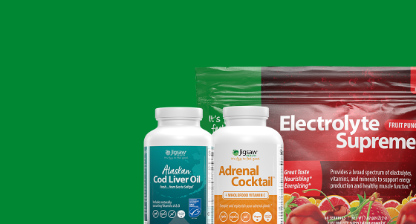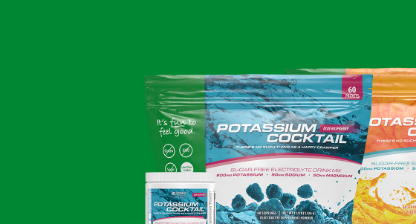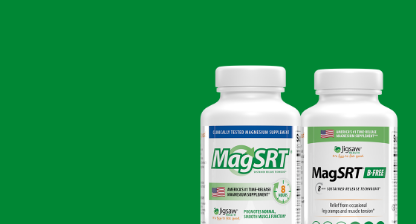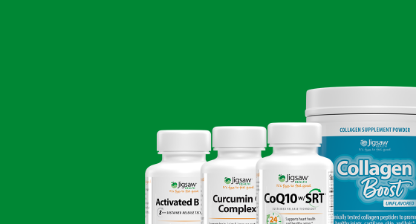Karen Edwards, PhD
A major paradigm shift is occurring in the consumer food market in this country. There is greater interest in the more natural approach to foods such as fruits, vegetables, and whole grains than there was just a few years ago. There is also much more attention being given to this trend in the press. And there are many more products bearing the terms organic and natural on the shelves of not only health food stores, but also in the major supermarket chain stores.
Even though this movement toward more nutritious and healthy foods is gaining strength, there still seems to be quite a few misconceptions and misunderstandings about what these foods really are and whether they're really good for you.
Use this guide to help you become more familiar with whole, natural, and organic foods -- and understand the issues surrounding the rapid increase of genetically engineered foods -- so you can make more informed choices.
Whole Foods
Whole foods are simply those foods that can be consumed in the forms in which they were originally created, and are not reduced to their isolated nutrients as found in scientifically refined products. They are utilized more efficiently by the body because they naturally contain all of the nutrients needed for proper assimilation in the properly balanced ratio. The synergistic action of a number of combined nutrients, although not fully understood at this time, results in the effect being greater than the sum of their individual parts.
Unfortunately, even whole foods today generally do not have the nutritional content that they did in past centuries. This is due to depletion of the nutrients in the soil caused by over cultivation, poor farming practices, and the use of artificial fertilizers, pesticides, and herbicides. Even though supplementation with vitamins and minerals can make up for the lack of adequate nutrients in today's junk and refined foods, the body still has to deal with the toxins, artificial colors, and food artifacts that are found in these types of foods. Therefore, it is always better to eat whole foods, rather than highly processed or refined foods, even though they may not be as highly nutritious as those foods that were readily available many years ago.1
Whole unrefined grains, for example, can help shorten bowel transit time by providing digestive fiber that traps toxins and slows down carbohydrate digestion. Whole grains also provide magnesium, antioxidants, phytochemicals, and vitamins -- nutrients that are removed during the refining process. For instance, a slice of whole grain bread contains about 16 times more vitamin E than a slice of white bread. Whole grains also contain 200-300 times more phytochemicals than refined grains. The American Journal of Clinical Nutrition suggests that whole grain consumption can help prevent weight gain.
Pay close attention to products that state they contain whole grains because some may consist of only a small amount of actual whole grains or may only be darkened by the addition of caramel coloring. The whole grains in the product should be at the top of the list of ingredients.2 According to the U.S. Food and Drug Administration (FDA), a whole grain food must contain 51% or more whole grains by weight and also meet regulatory definitions for low saturated fat and low cholesterol. Also, it is easy to confuse wheat flour with whole wheat flour, so be sure to apply the principle of caveat emptor.3
Natural Foods
Natural foods often imply that the food is healthful. However, unlike certified organic products, there are no standards for natural labeling, growing methods, or inspection systems. Natural simply means that the food or food product has had only minimal processing.4
The U.S. Department of Agriculture (USDA) definition for natural is: A product containing no artificial ingredient or added color and is only minimally processed (a process which does not fundamentally alter the raw product) may be labeled natural. The label must explain the use of the term natural (such as no added colorings or artificial ingredients; minimally processed). 5 Ideally, all of our foods should be natural -- that is, whole, unprocessed, and unrefinedand preferably grown locally and eaten in their season. In other words, they should have only what nature intended them to have with nothing removed and nothing added.6
Organic Foods
There is some confusion, and even misunderstanding, of the term organic. This term actually refers to the method of producing foods and not to the quality or safety of the foods. In April 1995, a definition developed by a joint National Organic Standards Board (NOSB)/National Organic Program (NOP) task force was passed by the NOSB. It says:
Organic agriculture is an ecological production management system that promotes and enhances biodiversity, biological cycles and soil biological activity. It is based on minimal use of off-farm inputs and on management practices that restore, maintain and enhance ecological harmony. Organic is a labeling term that denotes products produced under the authority of the Organic Foods Production Act. The principal guidelines for organic production are to use materials and practices that enhance the ecological balance of natural systems and that integrate the parts of the farming system into an ecological whole. Organic agriculture practices cannot ensure that products are completely free of residues; however, methods are used to minimize pollution from air, soil and water. Organic food handlers, processors and retailers adhere to standards that maintain the integrity of organic agricultural products. The primary goal of organic agriculture is to optimize the health and productivity of interdependent communities of soil life, plants, animals and people.7
Only the government could come up with a definition that complex!
To further confuse you, the USDA Organic Food Labeling Requirements are provided below:
100% Organic Products: Must contain 100% organically produced ingredients, not including added water and salt. This product may display the USDA organic seal.
Organic Products: Must contain at least 95% organic ingredients, not including added water and salt. Must not contain sulfites. May contain up to 5% of: non-organically produced agricultural ingredients not commercially available in organic form or other substances. This product may display the USDA organic seal.
Made With Organic Ingredients: Must contain at least 70% organic ingredients, not including added water and salt. Must not contain added sulfites, except that wine may contain small amounts of sulfur dioxide. May contain up to 30% of: non-organically produced agricultural ingredients or other substances, including yeast. This product may not display the USDA organic seal.
Made With Some Organic Ingredients: May contain at least 70% organic ingredients, not including added salt or water. May contain over 30% of: non-organically produced ingredients or other substances. This product may not display the USDA organic seal.8
It is just as important to know what is not allowed in organic foods. Section 205.105 of the NOP Standards delineates what is prohibited including: synthetic substances, certain non-synthetic, non-agricultural, and non-organic substances, excluded methods (genetically modified organisms), ionizing radiation, and sewage sludge.
There is still continuing debate as to whether organic food is better for you than the food normally found on the supermarket shelves. For instance, Harvard Medical School researchers found that there is virtually no difference in nutrition between organic and non-organic food. And a registered dietitian at the University of Michigan stated that there is no scientific evidence to prove that organic foods are safer or more nutritious than conventionally grown foods.
On the other hand, a study published by the Alternative Therapy Health and Medicine journal showed that organic food was more nutritious, contained more protein, and had fewer nitrites. The reason given for the increased nutrient levels was that organically raised crops contained less water than conventionally grown crops, and that the additional water causes dilution of the nutrients. Also, there is some evidence that the use of artificial fertilizers in conventional farming somewhat reduces the ability of fruits and vegetables to absorb trace minerals.9
One of the problems that has contributed to this dichotomy is the relatively small number of research studies that have been done on the potential effects of organic agriculture methods on nutrition. In addition, most of the studies that have been conducted look at only one phase of the production processfor example, fertilizers, condition of crops when freshly picked, condition after crops have been stored, etc. One nutritional researcher compared some 1,230 published comparisons of nutrient levels and found that organic crops had higher nutrient levels or lower toxic levels in 56% of the comparisons, the conventional crops were better in 37% of the comparisons, and there was no difference in 7% of the comparisons.10
Another concern for conscientious shoppers is the amount of residual pesticides in foods such as fresh fruits and vegetables. One comprehensive study in 2002 evaluated more than 90,000 measurements taken over a wide range of different foods. This study compared conventionally grown, integrated pest management(IPM) grown, and organically grown foods using data from the USDAs Pesticide Data Program, the California Department of Pesticide Regulation, and private tests by Consumers Union. When all of the results were tabulated, based on various evaluation criteria, the organically grown produce was found to be significantly lower in both single and multiple pesticide residues, while the conventionally grown produce contained the highest levels by far, and the IPM grown produce was somewhere in between11
Even though there have been few significant studies conducted on the value of organically produced foods, U.S. consumers have been seeking out these foods and food products in increasingly larger numbers. A nationwide survey conducted by Whole Foods Market during September 2002 found that more than 55% of Americans have tried organic foods. Eighty-seven percent of those who buy these products on a regular basis rate them higher in quality than conventionally grown foods. Sixty-eight percent of these shoppers were found to get their information mainly from product labels and food manufacturers.
This survey also pointed out that organic foods are no longer limited to being purchased by upper income and higher educational level consumers, and that mainstream consumers throughout the nation are now becoming more familiar with organic foods and are purchasing them more frequently.12
Genetic Engineering
Genetic engineering (GE) is defined as the technique of removing, modifying, or adding genes to a DNA molecule to change the information it contains. A genetically modified organism (GMO) refers to organisms that have had genes from other organisms transferred to them by laboratory methods.13 The United States, Argentina, Canada, and China account for 99% of the GMO crop acreage in the world.14
Depending on the source, genetically engineered foods are either the greatest agricultural achievement in history or a recipe for disaster. The two most commonly heard concerns against GMOs is whether or not these foods pose any health threat to consumers, and the effects of genetically engineered crops on the environment. Also, they may have an adverse impact on the integrity of organic farming.15
Proponents of GE say that: (1) the technology is safe; (2) it greatly enhances food production to keep up with population growth; (3) genetically engineered crops are not significantly different from those that have been developed in the past through conventional methods such as hybridization and cross-pollination; and (4) it is needed to make existing crops thrive in harsh environments of the world. They also believe that GE will reduce the use of pesticides, increase yields, and bring higher profits to farmers.
Opponents of GE argue that: (1) the lack of food in some parts of the world is chiefly due to distribution, not production; (2) unpredictable consequences of genetic modifications may develop over time; (3) GMOs outside of the laboratory cannot be totally controlled and may exhibit unacceptable future risks to wildlife and other non-genetically engineered crops due to cross-contamination; and (4) people should not have to eat food that may have some negative health effects yet to be determined. Opponents also point out that the increasing use of GE in major crops may result in the large biotechnology companies acquiring so much power that there is a strong possibility that these companies may gain control of the market and the farmers as well.16
Another issue concerns proposals for labeling any food produced in the United States that contains GMOs. The European Union presently has rules for labeling of genetically engineered foods, and they do not want unlabeled foods from the United States. Effective labeling gives consumers a choice in what they eat so that they can avoid potential problems with GMO foods. Whether the dangers regarding GMO foods are real or perceived, it is interesting to note that famine-plagued countries in Africa do not accept genetically engineered foods, and even the Grocery Manufacturers of America has called for a complete ban. In addition, Californias Mendocino County has banned the growing of genetically engineered crops, and Vermont has passed a resolution that would hold biotech companies liable if genetically engineered crops contaminate other crops.15
Some genetically engineered crops such as tomatoes and tobacco have already been removed from the market. In 2001, genetically engineered potatoes were withdrawn by Monsanto because major users including Mc Donalds and Burger King rejected them. Other genetically engineered products such as flax seed, rice, and sugar beets have also experienced difficulty in being accepted in the marketplace. A proposal by the FDA to approve the commercial use of genetically engineered fish, particularly salmon, has been vigorously condemned by the fish farming industry, the food industry, and the scientific community. Cory Ollikka, the president of Canadas National Farmers Union, in calling for a moratorium on genetically engineered crops, stated that Farmers are really starting to question the profit-enhancing ability of products that seem to be shutting them out of markets world-wide. 14
©2006, Karens Kitchen, Inc.
About the author
Karen Edwards has a lifelong interest in cooking, and began to learn about nutrition and natural food preparation when her son was born. She branched out to study non-traditional healing methods for herself after developing chronic health problems. She overcame her health problems through natural healing and enrolled at Clayton College of Natural Health, where she received a PhD in Holistic Nutrition. Karen has served as a volunteer in a cooperative health food store, operated her own nutritional supplement store, and presented talks to various groups about healthy cooking methods and lifestyle changes. She is the author of Sweeten Your Life the Xylitol Way.
Cited Sources:
1) Hite, S. "Whole Foods vs. Isolated Nutrients." HealthKeepers Magazine, Vol. 7. Issue 2, 22-23, 2006.
2) Odum, L. "The Whole Truth." taste for life, 36-37, March 2004.
3) "Whole Grain Health Claim." taste for life, 15, March 2004.
4) "Organics Frequently Asked Questions." http://www.wholefoodsmarket.com/issues/org_questions.html
5) U. S. Department of Agriculture, Food Safety and Inspection Service. August 2003. www.fsis.usda.gov/oa/pubs/labterm.htm
6) Airola, P. How to Get Well. Sherwood, Oregon: Health Plus Publishers, 1995.
7) "Sustainable Agriculture: Definitions and Terms." http://www.nal.usda.gov/afsic/AFSIC_pubs/srb9902.htm
8) Peterson, E. "Organic Foods: To Buy or Not To Buy?" EBSCO Publishing, 2005.
9) http://www.health24.com/natural/Go_organic/17-673,22721.asp
10) Worthington, V. "Nutrition and Biodynamics: Evidence for the Nutritional Superiority of Organic Crops." July 1999. http://www.mindfully.org/Food/Organic-Crops-Superior-WorthingtonJul99.htm
11) http://www.ourstolenfuture.org/NewScience/oncompounds/2002-0508bakeretal.htm
12) "Whole Foods Market Nationwide Survey Reveals More Than Half of Americans Have Sampled Organic Foods and That Food Labels Matter." October 2002. http://www.wholefoodsmarket.com/company/pr_organicsurvey.pdf
13) Glossary of Biotechnology Terms. http://www.csrees.usda.gov/nea/biotech/res/biotechnology_res_glossary.html
14) "GE Crops increasingly isolated as awareness and rejection grow." Greenpeace International Genetic Engineering Campaign, March 2002. http://www.greenpeace.org/-geneng
15) Mellgren, J. "Seeds of Change: A GMO Update." The Gourmet Retailer, 25, No. 10, 94-98, October 2004.
16) Genetic Engineering. Wikipedia, the free encyclopedia. http://en.wikipedia.org/w/index.php?title=Genetic_engineering&printable=yes

















